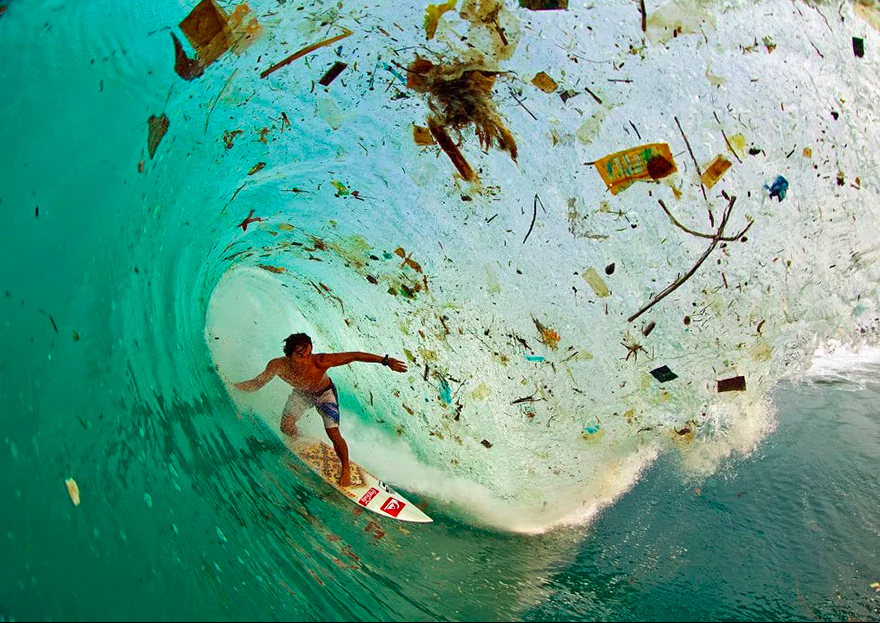
Dr. Sarah-Jeanne Royer & Plastic Gases
Happy August!
Dr. Sarah-Jeanne Royer published a new study, which finds that “the most commonly used plastics produce two greenhouse gases, methane and ethylene, when exposed to ambient solar radiation.” In other words, as plastic waste decomposes, exposure to the sun causes the plastic to emit gases that contribute to the greenhouse effect.
In July 2017, we wrote about a a study on the production, the use, and the fate of all plastics. Since 1950, 8.3 billion metric tons of “virgin plastic” has been produced, 75.9% of which has become plastic waste. Seventy-nine percent of this plastic waste has been relegated to landfills or the natural environment.
According to BBC News, “Dr. Royer found that the most widely-used plastic, the stuff used to make shopping bags, is the one that produces the greatest amount of these warming gases.”
Initially, Dr. Royer intended to measure the methane gas emission of biological samples from the ocean. In the course of her study, she discovered that the plastic bottles that held the samples produced greater methane emissions than the samples themselves.
The parameters of Dr. Royer’s study are as follows:
“After selecting the plastic category emitting the greatest amount of hydrocarbon gases, we tested the effect of a change in density and morphology (i.e., pellets, flakes, powder) on hydrocarbon gas emissions. Environmental factors, including solar radiation, UVB (ultraviolet B; 280–320 nm) and solar radiation exposure history were varied as part of this study. These tests were executed in parallel with two long-term experiments assessing the effect of aging for 212 days using virgin pellets and for 152 days using marine plastic from the ocean. Finally, to determine the impact of medium on plastic degradation and gas emissions, we tested the production of gases from plastic incubated in either air or in water.”
Dr. Royer’s study finds that the methane gas emitted by virgin pellets after 212 days is 176 times stronger than the methane emitted at the start of the experiment. This emission rate doubles that of emissions from the ocean over the same length of time.
As BBC News reports, the primary focus on the relationship between plastics and climate change has been on the fossil fuels used to produce plastics. Dr. Royer’s study is the first to quantify the emission of warming gases other than CO2 from plastic waste.
While the level of emissions is relatively small at present, it is expected to increase as plastic waste from the past 70 years continues to break down and as new plastics are produced.
Luckily, it’s not all bad news. Last week The New York Times reported that scientists are developing plastics that self-destruct on command. How does it work?
To create plastic, molecules are formed into long chains, called polymers. Historically, stable polymers have been used because they do not break down easily. Now scientists want to create plastic with unstable polymers. When these polymers encounter a trigger, such as light or acid, their long molecular chains will “unzip” and return to their original, small molecular state.
Marc Hillmyer, head of the Center for Sustainable Polymers at the University of Minnesota, notes that the challenge is to create plastic polymers that are stable when in use and that are unstable when they are no longer needed.
To learn more about plastic waste or to get involved, visit plasticpollutioncoalition.org.
Sources:
McGrath M (2018) Plastic pollution: How one woman found a new source of warming gases hidden in waste.
BBC News: Science & Environment. https://www.bbc.co.uk/news/science-environment-45043989
Roland G, Jambeck J, Lavender Law K (2017) Production, use, and fate of all plastics ever made. Science Advances.
DOI: 10.1126/sciadv.1700782. http://advances.sciencemag.org/content/3/7/e1700782.full
Royer S-J, Ferrón S, Wilson ST, Karl DM (2018) Production of methane and ethylene from plastic in the environment.
PLoS ONE 13(8): e0200574. https://doi.org/10.1371/journal.pone.0200574
Lim X (2018) Designing the Death of Plastic. The New York Times. https://www.nytimes.com/2018/08/06/science/plastics-polymers-pollution.html

No Comments